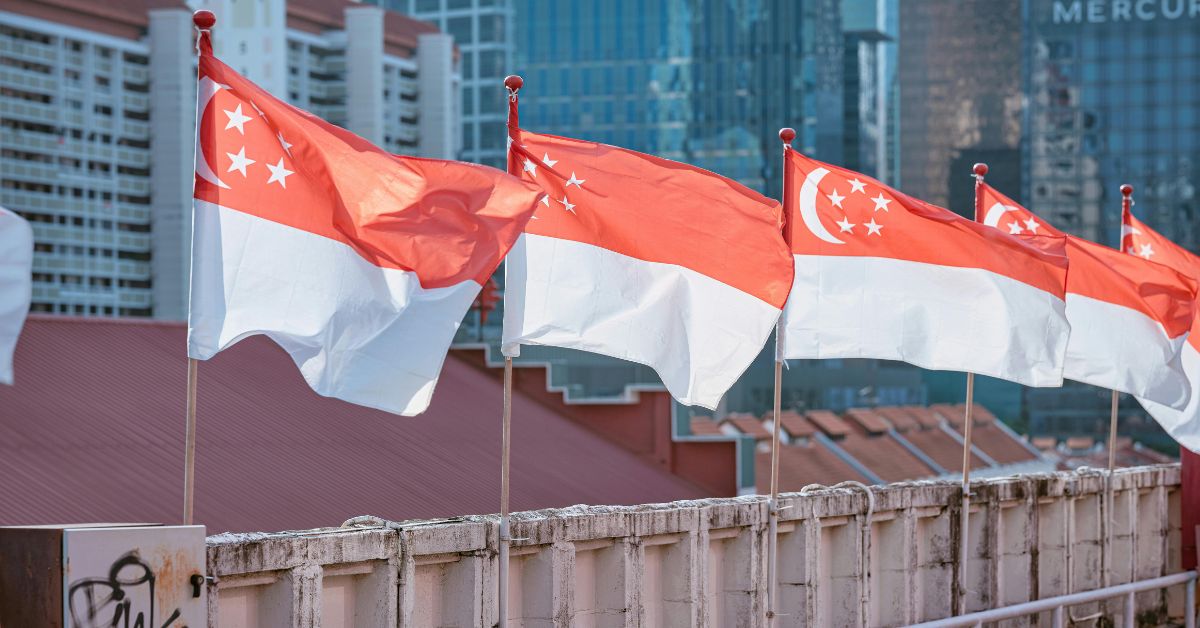Singapore has revised its economic growth forecast for 2025, reflecting a stronger-than-anticipated performance in the first half of the year. The Ministry of Trade and Industry (MTI) announced on August 12, 2025, that the city-state’s GDP growth projection for the year has been raised to a range of 1.5% to 2.5%, up from the previous estimate of 0.0% to 2.0%. This adjustment comes after the economy expanded by 4.4% year on year in the second quarter, surpassing initial estimates. While the outlook is more optimistic, uncertainties tied to U.S. tariffs and global trade dynamics continue to pose risks. This article explores the factors driving the upgraded forecast, sector-specific contributions, and the challenges ahead.
Strong Economic Performance in Q2 2025
The Singapore economy demonstrated resilience in the second quarter of 2025, growing by 4.4% year-on-year, slightly above the advance estimate of 4.3% and extending the 4.1% growth recorded in the first quarter. On a quarter-on-quarter, seasonally adjusted basis, GDP expanded by 1.4%, rebounding from a 0.5% contraction in the first quarter. This performance helped Singapore avoid a technical recession, defined as two consecutive quarters of decline, according to data from the MTI.
For the first half of 2025, Singapore’s GDP growth averaged 4.3% year on year, driven primarily by export-oriented sectors. The ministry highlighted that this robust performance prompted the upward revision of the full-year forecast. However, officials cautioned that growth is expected to moderate in the second half due to fading front-loading effects and the impact of U.S. tariffs.
Key Sectors Fueling Growth
Several sectors played a pivotal role in Singapore’s economic performance in Q2 2025:
- Manufacturing: The sector grew by 5.2% year on year, accelerating from 4.7% in the first quarter, with strong output in electronics and precision engineering, particularly in AI-related semiconductors, according to The Straits Times.
- Wholesale Trade: Boosted by front-loading activities ahead of U.S. tariff implementations, this sector saw significant growth, contributing to the overall economic upswing.
- Transportation and Storage: The sector benefited from increased regional trade activity, particularly in water transport, driven by front loading before tariff measures took effect.
- Finance and Insurance: Steady demand for banking and payment services supported growth, though fragile business confidence may temper future gains.
Conversely, domestic-oriented sectors like food and beverage services contracted, partly due to increased outbound travel by Singaporeans, which reduced local spending, as reported by AsiaOne.
Impact of U.S. Tariffs and Front Loading
The global trade environment has been a significant factor in Singapore’s economic performance. In April 2025, the MTI downgraded its GDP forecast to 0.0% to 2.0% from 1.0% to 3.0% following U.S. President Donald Trump’s announcement of sweeping tariffs on global trading partners. However, a 90 day pause on these tariffs, along with successful trade negotiations with countries like Japan, South Korea, and several Southeast Asian nations, has eased immediate pressures, according to Morningstar.
This pause led to front loading, where businesses accelerated shipments to avoid anticipated tariffs, boosting Singapore’s manufacturing and trade-related sectors. The MTI noted that this temporary surge contributed to the strong first-half performance. However, as these front loading effects wane, growth in outward oriented sectors like wholesale trade and transportation is expected to slow in the second half of 2025.
Revised 2025 GDP Forecast
The upgraded GDP growth forecast of 1.5% to 2.5% reflects Singapore’s stronger-than-expected economic activity in the first half of 2025. The MTI’s earlier projection in May, which anticipated growth as low as 0.0%, was based on fears of a severe trade downturn due to U.S. tariffs. The revised range indicates cautious optimism, supported by:
- Resilient Global Economies: Advanced economies, including the U.S. and Eurozone, have performed better than expected, with the U.S.-China 90-day tariff truce extended for another three months, as reported by Bloomberg.
- Sectoral Strength: Continued demand for Singapore’s key exports, such as semiconductors and pharmaceuticals, despite a 10% U.S. tariff on Singaporean goods.
- Fiscal Support: Initiatives like the Business Adaptation Grant, capped at $100,000 per firm, set to launch by October 2025, aim to support manufacturers and exporters, according to The Edge Singapore.
However, the MTI emphasized that risks remain tilted to the downside, with potential challenges including new U.S. sectoral tariffs on pharmaceuticals and semiconductors, which account for 7.9% and 11.2% of Singapore’s non-oil domestic exports, respectively.
Challenges and Risks Ahead
Despite the positive revision, Singapore’s economic outlook is not without concerns. The MTI warned that global uncertainties, particularly related to U.S. trade policies, could disrupt growth. Key risks include:
- Tariff Impacts: The expiration of the U.S. tariff pause could lead to higher duties, affecting demand for Singapore’s exports in global markets.
- Geopolitical Tensions: Escalations in conflicts could disrupt energy supplies and increase global commodity prices, impacting Singapore’s import dependent economy.
- Economic Slowdown: Growth in major trading partners like the U.S., China, and the Eurozone is expected to moderate, potentially reducing demand for Singapore’s exports.
- Domestic Weakness: Sectors like retail and food and beverage services face challenges due to increased outbound travel and potential softening of domestic demand.
The MTI also noted that a renewed spike in economic uncertainty could lead businesses to delay hiring and households to cut spending, further slowing growth. The manufacturing sector, a significant contributor to GDP, is particularly vulnerable to U.S. tariffs, which could dampen global demand.
Bright Spots in the Economy
Amid these challenges, certain sectors offer hope for sustained growth. The transport engineering cluster, driven by high-value aircraft maintenance, repair, and overhaul work, is expected to remain robust. Similarly, the precision engineering sector is benefiting from increased capital investments in AI-related semiconductors, as highlighted by The Edge Singapore. Visitor arrivals, up 6% between April and May 2025 due to events like the Lady Gaga concert and a recovery in Chinese tourists, are supporting the accommodation sector.
Monetary and Fiscal Policy Responses
The Monetary Authority of Singapore (MAS) maintained its monetary policy stance in July 2025, following two easings earlier in the year. Analysts from Maybank expect the MAS to retain its modest appreciation bias at its October meeting, supported by falling financing rates and safe haven capital inflows, which have lowered the three-month Singapore Overnight Rate Average (SORA) to 1.95% as of July 14, 2025.
On the fiscal side, Singapore’s government is preparing to roll out measures like the SG60 package to support jobseekers and businesses affected by trade disruptions. The country’s $14.3 billion surplus for FY2021 to FY2025 provides room for additional fiscal support, according to The Edge Singapore.
Analyst Perspectives
Private sector economists have also revised their forecasts. Maybank economists raised their 2025 GDP projection to 3.2% from 2.4%, citing reduced trade fears and domestic tailwinds, while Barclays Research adjusted its forecast to 2.0% from 1.0%. OCBC’s Selena Ling upgraded her estimate to 2.1%, noting that full year growth is likely to exceed 2% despite a potential slowdown. However, RHB Bank’s Barnabas Gan maintained a cautious 2% forecast, highlighting risks from escalating tariffs.
Conclusion
Singapore’s Ministry of Trade and Industry raised its 2025 GDP growth forecast to 1.5% to 2.5% on August 12, 2025, following a 4.4% year on year GDP increase in Q2, which exceeded initial estimates. The first half of 2025 saw 4.3% growth, driven by manufacturing, wholesale trade, and transportation sectors, boosted by front-loading ahead of U.S. tariffs. Despite the optimistic revision, the MTI cautioned that growth is expected to slow in the second half due to fading front-loading effects and uncertainties from U.S. trade policies. Fiscal and monetary measures, along with strengths in sectors like transport engineering, provide some resilience, but risks remain tilted to the downside.
Sources & References:
- Reuters
- The Straits Times
- Bloomberg
- The Edge Singapore
- AsiaOne
- Morningstar
- Channel News Asia
Author
-

Marcus Hale is a finance professional turned content creator who specializes in personal finance, stock market analysis, crypto trends, and smart investing strategies. Known for simplifying complex financial concepts, Marcus helps readers make confident money decisions. Whether you’re budgeting, investing, or tracking global markets, Marcus delivers timely advice with clarity and authority.







